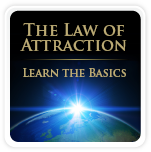-
 Love &
Love &
Relationships -
 Money &
Money &
Success -
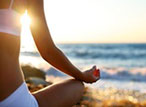 Mind &
Mind &
Spirit -
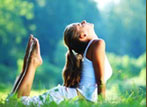 Health &
Health &
Wellness -
 Inspirational
Inspirational
Videos -
 Spiritual
Spiritual
Coaching -
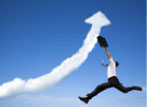 Life
Life
Coaching
TCM Wind – Wind in Chinese Medicine
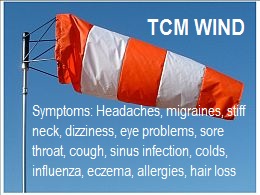 Is there any connection between headaches, pain in joints, and windy weather? Yes! According to Chinese Medicine, wind does affect our bodies and can cause pain if we are not careful.
Is there any connection between headaches, pain in joints, and windy weather? Yes! According to Chinese Medicine, wind does affect our bodies and can cause pain if we are not careful.
How does wind affect our bodies, according to TCM?
In Chinese Medicine, wind can negatively affect our bodies in two ways. It can either invade our bodies form the outside (external wind), or it can be internally generated due to a weakened immune system (internal wind). The lungs is the organ that is most attacked by the external wind, and the liver is the organ that is most related to an imbalance in the liver. A wind-imbalance inside our bodies is referred to as pathogenic wind in Chinese Medicine.
- External wind often affects the lungs
- Internal wind often affects the liver
- Wind-imbalance due to external invasion, or that is internally generated, is called pathogenic wind, according to TCM (Traditional Chinese Medicine)
What are the symptoms of TCM wind?
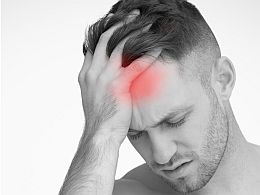 In TCM, wind has and ”upward movement” which can cause problems in head & face, and even lead to weakness and paralysis in face muscles. Since wind causes movement, symptoms of shaking, twitching, and spasm are usually involved.
In TCM, wind has and ”upward movement” which can cause problems in head & face, and even lead to weakness and paralysis in face muscles. Since wind causes movement, symptoms of shaking, twitching, and spasm are usually involved.
There is also a connection between wind and headaches / migraines. According to TCM, headaches and migraines are triggered by invasion of wind and heat. This causes meridian obstructions, and disturbs the blood and qi flow in the head, which in turn can lead to headaches or migraines.
Hypertension can induce and aggravate pathogenic wind symptoms. Stroke is regarded as and extreme ”upward movement” of wind into the brain, according to Chinese Medicine. However, most symptoms of pathogenic wind are not life threatening, but some can be disabling. Below are examples of pathogenic wind symptoms:
- headaches
- common cold, influenza
- sinus infection
- sore throat & certain cough
- itchy sensations and rashes on skin, in nose & eyes
- allergies
- eczema
- hair loss
- eye disorders
- early stage rheumatism
Other examples of pathogenic wind symptoms that are less common are:
- epilepsy
- Bell’s Palsy
- Parkinson’s disease
- stroke
- coma
What about wind directions?
According to TCM, wind directions play an important role when it comes to pathogenic wind symptoms. Depending on the wind direction, some organs / meridians are more affected than others. This can be very useful information.
For example, if you often get headaches or migraines when it’s windy outside, it can be of value to learn about the wind direction to see which organ / meridian that is affected and causing the pain. According to TCM, migraines are triggered by wind invasion together with an unbalanced liver meridian. Winds from the east affect the liver, and this is why migraines can get worse by eastern winds. Also, dysfunctions of the kidney-, gallbladder-, and stomach-meridian can also develop headaches.
As you get to know the root problem of your symptoms, the treatments have a greater chance to be successful. Acupuncture, herbs and cupping are often used in TCM to dispel pathogenic wind, see text further down.
The table below is showing wind directions, and how the body is affected.
| WindDirection | Name of Wind | Its Qi Causes | Internally Affects | Externally Affects |
| South | Great Feathery Wind | Heat | Heart | Channels |
| South West | Scheming Wind | Weakness | Spleen | Muscles |
| West | Hard Wind | Dryness | Lungs | Skin |
| North West | Breaking Wind | Blockage in Channel | Small Intestine | Arm, Major Yang Channel |
| North | Great Hard Wind | Coldness | Kidneys | Bones, Shoulders, Major Back Muscles |
| North East | Unfortunate Wind | (not stated in text) | Large Intestine | Armpits, Sides of Ribs, Lower Bones, Limb Joints |
| East | Children’s Wind | Dampness | Liver | Thick Muscles |
| South East | Feathery Wind | Body Weight | Stomach | Muscles, Flesh |
How is TCM wind treated?
In TCM, wind invasion is often treated with acupuncture, herbs, and/or cupping.
- Acupuncture – TCM wind symptoms like fever, chills, nasal congestion, upper back pain, and stiff muscles, can be treated with acupuncture. It has been reported to be very effective, especially in the beginning stages of TCM wind symptoms. What it does is that the acupuncture needles settles and extinguishes the pathogenic wind from the body and restores the energy flow.
- Herbs – Chinese Medicine also includes herbs to dispel TCM wind. Effective herbs for TCM wind are focused on the superficial layer of the lung and body.
- Cupping – Cupping can be very effective for treating pathogenic TCM wind symptoms, and is often used to treat respiratory problems and muscles aches in the upper body. Cupping draws the wind to the surface of the body and is then expelled through the pores.
How to prevent TCM wind invasion
Below is a list on simple things that you can do to prevent pathogenic wind invasion.
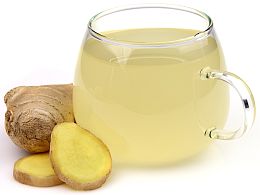 Avoid prolonged exposure to drafts and windy weather
Avoid prolonged exposure to drafts and windy weather- Wear a scarf to protect head, neck, and face
- Use moisturizing skin lotion in dry seasons
- Exercise for at least 20 minutes everyday to keep your energy flowing
- Meditate daily to manage stress
- Don’t drink alcohol when you have a cold – Drink ginger tea instead!
Wind with other pathogens such as heat, cold, or dampness
When wind comes with other pathogens such as heat, cold, or dampness, it gives rise to syndromes known as wind-heat, wind-cold, and wind-dampness. This awareness helps the TCM doctor to understand the patient’s root problem even further, and allows for a precise and effective treatment.
Headaches – Migraines – Joint-Pain – Arthritis
Many headaches and migraines are due to wind-heat invasion. However, tension headaches, headaches of cervical origin, and heavy sensations in head, are caused by wind-dampness obstruction. Joint-pain and arthritis are also caused by wind-dampness. Below you will find symptoms and treatments of different TCM wind syndromes.
Wind-Heat
- Symptoms: migraines, headaches, high fever, rapid pulse, red face, red yes, red tongue, sore throat, thirst
- Treatments: Wind-heat syndrome is treated with herbs that repel and clear heat.
Wind-Cold
- Symptoms: chills, fever, no sweating, nasal congestion, headache, pain in the back of the head, neck, shoulders, upper back, stiff muscles
- Treatments: warm and sweat-inducing (diaphoretic) herbs that repel the wind and disperse the cold. Moxibustion therapy is also effective to dispel cold from the body.
Wind-Damp
- Symptoms: joint pain, arthritis, tension headaches, cervical headache, heaviness in head
- Treatments: Wind-damp is treated with herbs that drain dampness and improve circulation of blood and qi through the areas of the body that are affected. Moxibustion therapy is also often used to dispel damp from the body.
Wind-Rash – Dampness often plays a role in wind-rash condition
- Symptoms: sudden skin condition
- Treatments: herbs that drain dampness, scatter wind, and clear heat (if the rash is red and burns), coffee should be avoided since it heats up the blood and increases the wind
Wind-Water
- Symptoms: edema, swelling due to fluid retention that is caused by allergies, poisoning, or inflammation of the kidney.
- Treatments: acupuncture to move stagnant fluids, moxibustion to improve circulation and metabolize fluids, sweat-inducing or urine-producing herbs to help the body eliminate fluid
Liver-Wind (internal wind)
- Symptoms: abnormal movements such as shaking, spasm, twitching, convulsions, headaches, migraines
- Treatments: this long-term internal imbalance of liver yin or blood deficiency can be helped with acupuncture and TCM herbal medicine.
Blood Deficiency Leading to Wind (internal wind)
- Symptoms: numbness and cramping, headaches, migraines
- Treatments: tonifying the blood
Excessive Heat Producing Wind (internal wind)
- Symptoms: sudden collapse, heatstroke, sudden convulsions
- Treatments: use cool (not cold) water on the skin, drink fluids, avoid alcohol & coffee

